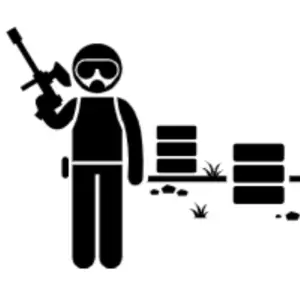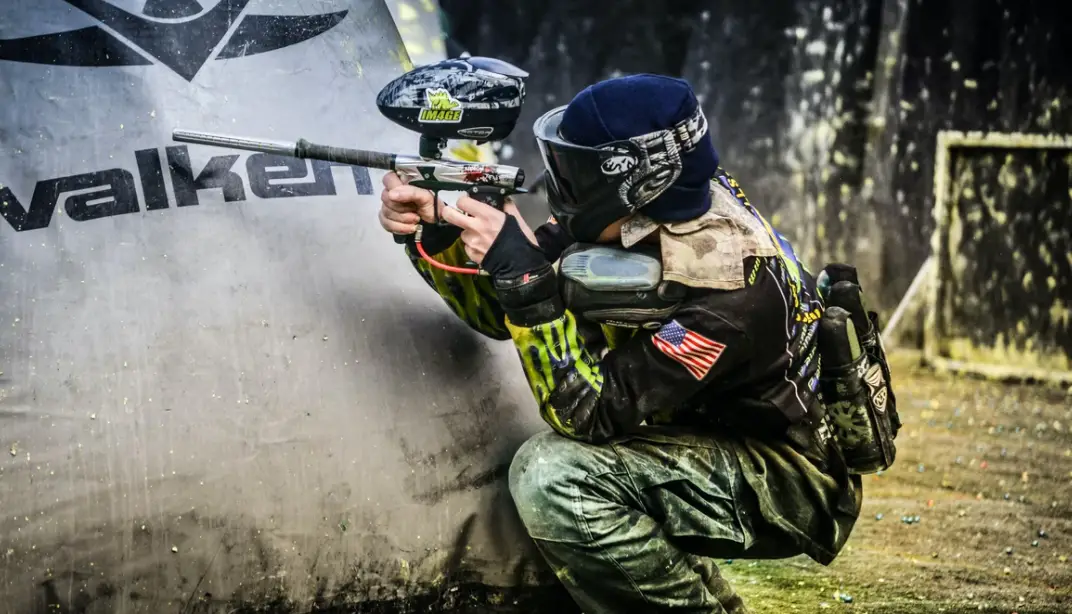As an Amazon Associate I earn from qualifying purchases.
As a paintball player, you want to make sure that you always have a paintball gun with the best parts. When it comes to tanks, many prefer having a paintball compressed air tank rather than a CO2 tank. Both compressed air and carbon dioxide are high-pressure gases. A paintball gun will not work without any of these two gases.
But what makes a paintball compressed air tank different? Compressed air tanks offset the cons of using a CO2 tank. HPA tanks can hold high pressure of about 3000 or 4500psi (pounds per square inch). It has a regulator, which lowers the rating to 850psi or 450psi. The best part of using an HPA tank is its consistency in pressure, and it works very well even with electronic markers.
Table of Contents
How Does the Paintball Compressed Air Tank Work?
A paintball compressed air tank is called high-pressure air or HPA tank. You may also hear it called a nitrogen, nitro, or N2 tank. So, if ever you encounter such words, know that they all refer to the same thing.
Because of the drop in PSI when CO2 changes from liquid to gas, using CO2 tanks diminishes the performance of markers. An HPA tank solves this problem and why this type of compressed air paintball tank rose in popularity during the 90s.
As the term suggests, compressed air uses atmospheric air forced and compressed into a tank. The more it is compressed inside, the more air can fit in the tank. The pressure inside the paintball tank has a normal rate of 3000psi or 4500 psi. It is regulated to the paintball gun’s pressure, either 850psi or 450psi, depending on how much the marker can tolerate.
The best part of high pressure air is it maintains its gaseous form when compressed. So, the marker does not have to deal with any gas to liquid (and vice versa) changes.
Paintball Compressed Air Tank: The Pros
The benefits that one can get from using a paintball compressed air tank are as follows:
Consistency
Due to the regulated pressure, you can expect stability and steady output from your marker. Unlike when using CO2, where the pressure drops the more and faster you shoot, you can be assured that you will have a consistent force with HPA tanks.
All-Weather Friendly
The tank and paintball gun get cold every time the liquid CO2 expands. You can even visibly see white fogs or flakes falling from the barrel every time you shoot. This fog is dry ice, and it can be bad on your marker’s seals. With a paintball compressed air tank, though, you do not need to worry about this issue. Because it has consistent pressure, you can fire all you want in every weather condition. Be it warm or cold, you can still have a good game because your marker will perform at its best all the time.
Can be Used on Electronic Marker
Carbon dioxide may damage the electronic solenoids. Hence, they are not applicable to use with electronic paintball guns. Luckily, nitrogen tanks are meant for use with electronic markers without causing any damage or harm to any of its parts.
Improved Overall Performance
Using a paintball compressed air tank results in better shooting accuracy and a high firing rate. This generally improves a baller’s overall performance in the game.
Easy to Refill
A nitrogen tank has a fill nipple located at the side of its tank regulator. You do not need to remove the tank from the marker when refilling since you can fill it conveniently using the nipple. But, make sure never to oil or grease the fill nipple. Keep all flammable materials away from the tank.
Convenient Top-Up
For a CO2 tank, you need to empty them first before you can refill them. However, you can easily add more compressed gas in a paintball compressed air tank even if it still has some content inside.
Paintball Compressed Air Tank: The Cons
Though a paintball compressed air tank is mostly the best choice, it does not come without any drawbacks:
Expensive
What discourages most people from getting a paintball compressed air tank is the price. The initial cost for purchasing the tank itself is between $50 to $300. A high-quality tank that can cater to more shots is more expensive than regular tanks.
Refill Availability
Before purchasing a nitrogen tank, make sure that the paintball field you usually frequent can refill it. Tire shop compressors and domestic compressors do not have enough power for 3000 psi.
Large Size
If you have a smaller physical build, the larger size of an HPA tank may be too much for you to handle. Tanks with compressed air are larger and heavier compared to CO2 tanks that offer the same number of shots.
Things to Keep in Mind when Using a Paintball Compressed Air Tank
- You may fill a paintball compressed air tank yourself as long as you know how to. Double-check the tank rating and use the one intended for your tank correctly.
- Do not fill a paintball compressed air tank above its intended psi. For example, if you have a 3000psi compressed air tank, make sure you only fill it with 3000. Though you may fill a 4500psi tank with 3000psi, the pressure won’t be the same as when you fill it with 4500psi.
- Always check for the tank’s hydro date stamp.
- Get the tanks checked and tested every 3 to 5 years, depending on the manufacturer’s recommendations.
Conclusion on the Paintball Compressed Air Tank
Investing in a paintball compressed air tank is a good choice. Though it is more expensive, you only have to spend a lot once when buying the tank. Refilling it is not that costly. Also, you can enjoy many more benefits than disadvantages if you opt for this kind of tank. If there is one major consideration, however, it is the large size of the tank. Make sure that you are comfortable with the size before buying one. Otherwise, it will only lead to discomfort and decreased performance in the field if you cannot carry it well.
Amazon and the Amazon logo are trademarks of Amazon.com, Inc, or its affiliates.

About Alwayne
Alwayne is a Pro Paintball Coach in profession. He has a long experience as a Paintball Coach. Now, Alwayne is sharing over 10 years of experience of all tips and tricks about paintballs. The reviews and guide are elaborate at its best!





